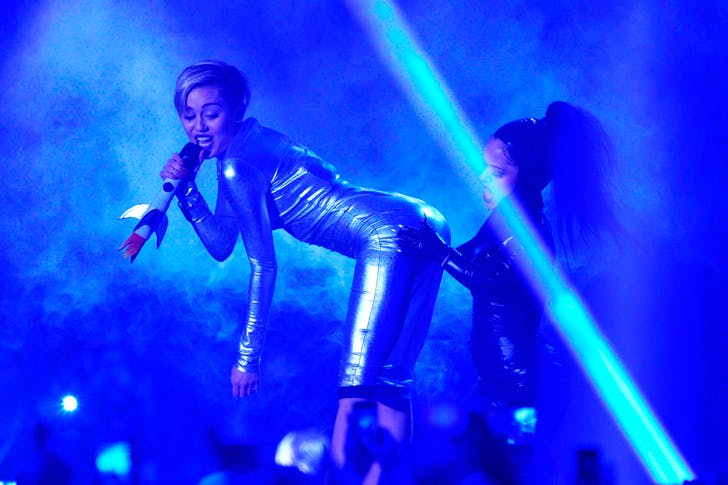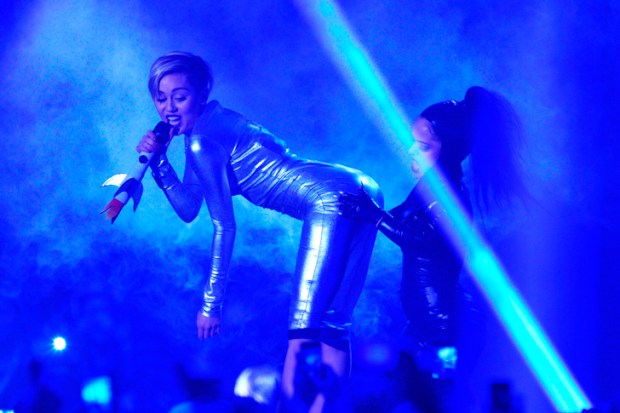A new front in the war against racism has opened up and the fight is being taken to a new generation of offenders. They are not the alt-right or even the politically incorrect. You can find many of them on MTV, Rage or at the latest charity concert.
Ashley Tisdale, of High School Musical fame, was excoriated by fans, demonstrating what could only be described as ‘outrage by proxy’, after dressing up in a sugar skull costume for Halloween. Non-Hispanics wearing costumes denoting the Mexican cultural event Día de Muertos (Day of the Dead) at Halloween elicit wild claims of ‘cultural appropriation’. One outraged Twitterer (is there any other kind?) commented, ‘it’s a Mexican holiday and it’s not something to just dress in even for fun’.
No one really knows how much exception people of Mexican heritage take to others dressing up like skeletons. The holiday itself is not celebrated in all parts of Mexico, or by all Mexican families, therefore the presumed outrage of the Mexican people is precisely that: presumed. Regardless, it is fairly certain that Tisdale is not a rampaging racist out to disrespect the cultures of minorities.
Crusaders against cultural appropriation also ignore that the fascinating Mexican holiday is not actually a Spanish-Catholic tradition but was itself appropriated from the previous Mesoamerican cultures after their subjugation by the Spanish. But at the very least, an interesting element from a previous culture has been retained and appreciated by the successor culture. The most important day on the Christian calendar after all, Christmas, represents a synchronising of pagan and Christian traditions.
Trouble stirs because cultural appropriation is, almost universally, couched in negative terms. But why do cultures appropriate from other cultures? Firstly there is a major definitional issue here. To appropriate means to take something, typically without consent. When one culture ‘appropriates’ traditions from another culture that other culture is not left with nothing. Culture is not something tangible that can be instantaneously stolen, given or returned. When the ancient Romans absorbed much of the philosophy and religious practices of Greece, they didn’t leave Greece a cultural wasteland.
What we are really talking about is not cultural theft but inspiration. Korea, Japan, Vietnam and Mongolia display countless styles of fashion and artistry inspired by successive Chinese dynasties.
No culture is able to produce, on its own, all the things required to ensure a successful society. That is why cultural appropriation happens and is beneficial. The Western culture of constitutionalism, separation of powers and free markets is appropriated by other societies to their benefit. The modern West is an amalgamation of ideas and traditions from Hellenic Greece, Latin Rome, Judaic belief, Christian belief, paganism, humanism, the Reformation, the enlightenment, and countless national revolutions.
Japan in its dress and cultural practices was highly influenced by neighbouring China over centuries. The kimono was undoubtedly influenced by the fashion styles of Imperial China. As Japan was exposed to Western culture, it steadily began to take on the fashion styles of Europeans. Now Europeans enjoy wearing Eastern clothing styles like the kimono, out of fascination. After all, they would hardly wear it out of hatred.
When a society produces art, fiction, dress, philosophy or politics that outsiders don’t have of course they are inclined to emulate it. In the US African-American music and dance is incredibly popular with people of all races and in recent years has transformed the music industry.
In the case of white pop star Miley Cyrus, criticised for appropriating black culture by ‘twerking’, her critics disregard an artist’s genuine desire to produce great art and instead ascribe to them the worst sort of motivations. It is hardly negative and more a sign of people wanting to immerse themselves in the aesthetics of an interesting culture.
Admittedly there is something absurd about white westerners dressing up in Native American headdress or in South Asian saris. But whether its Beyoncé sporting henna tattoos or now anyone wearing dreadlocks who isn’t black the exaggerated reaction is completely out of proportion to the original non-offence.
Strangely the one instance of cultural appropriation increasingly regarded as acceptable is the trend of Western women appropriating the hijab. Feminists once regarded puritan dress codes for women as backward and oppressive, but now the symbol of misogyny in the Islamic world is being praised as exotic and empowering. Cultural appropriation should stop when it results in borrowing from traditions that are at their root anti-women.
Indigenous cultures in Australia and the Americas object to the appropriation of their cultural products by outsiders who manufacture them for cheap decorations and trinkets. Their concern is a reasonable one. However, the idea that outsiders should be forbidden from accessing indigenous culture and artefacts is to presume that only those who identify with the culture through birth have the right to display it. That pertains a species of ethno-exclusionism that is potentially dangerous and antithetical to a functioning multicultural society like Australia.
This presents an opportunity to ultra-chauvinists in majority and minority communities who want to ‘purify’ their societies and enforce rigid separation between social groups. After all the Day of the Dead festival is actually a recent tradition, not celebrated much prior to the late 20th century, when it was regarded by the Church as un-Christian. Its revival may be the result of a nationalistic identity movement as opposed to anything spiritual. Criticism of Beyoncé for wearing traditional Indian costume in her music video came from some of India’s most xenophobic political groups.
Opponents might want to consider the consequences of suggesting that cultures should be closed off and unable to draw on the experiences and ideas of others. And they may want to reconsider the wisdom of attacking figures like Ashley Tisdale, Miley Cyrus and Beyoncé. Making enemies of people who appreciate and adore the cultures of others seems to be an ill thought-out way of combating minority disadvantage.
No one seems to pick up on the fact that an actual racist is in fact the least likely to appropriate from another culture. The typical cultural appropriator doesn’t wear a white hood. More likely, they’re a white progressive who buys a Cherokee handbag or a pasty student sporting dreadlocks. Silly, but hardly wicked.
Got something to add? Join the discussion and comment below.
Get 10 issues for just $10
Subscribe to The Spectator Australia today for the next 10 magazine issues, plus full online access, for just $10.














Comments
Don't miss out
Join the conversation with other Spectator Australia readers. Subscribe to leave a comment.
SUBSCRIBEAlready a subscriber? Log in